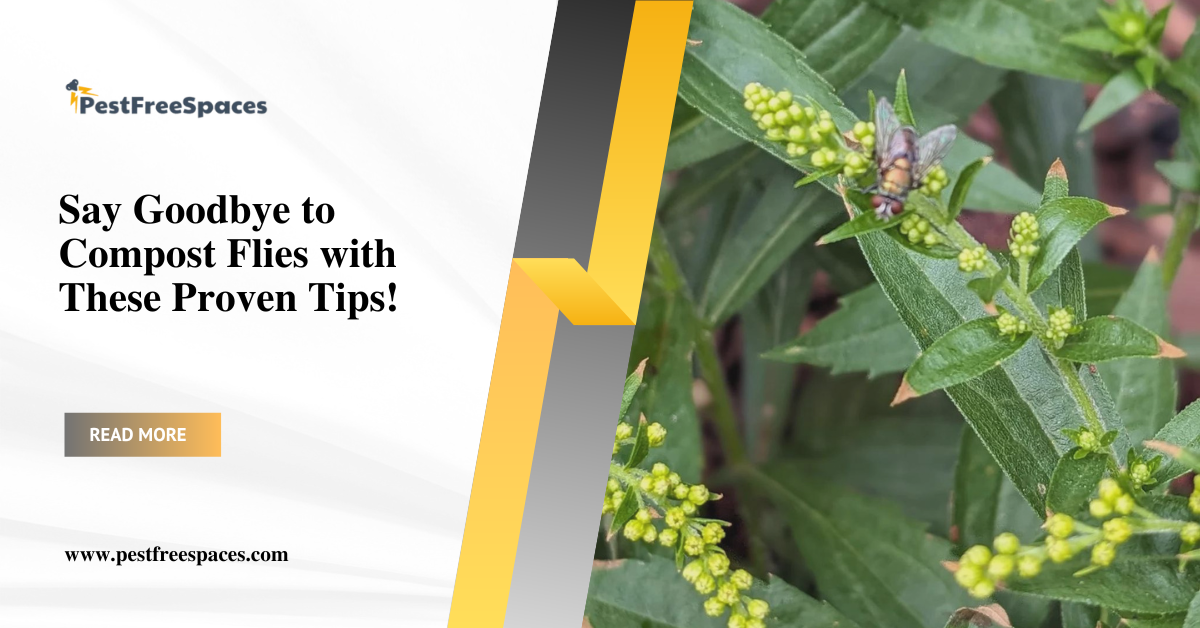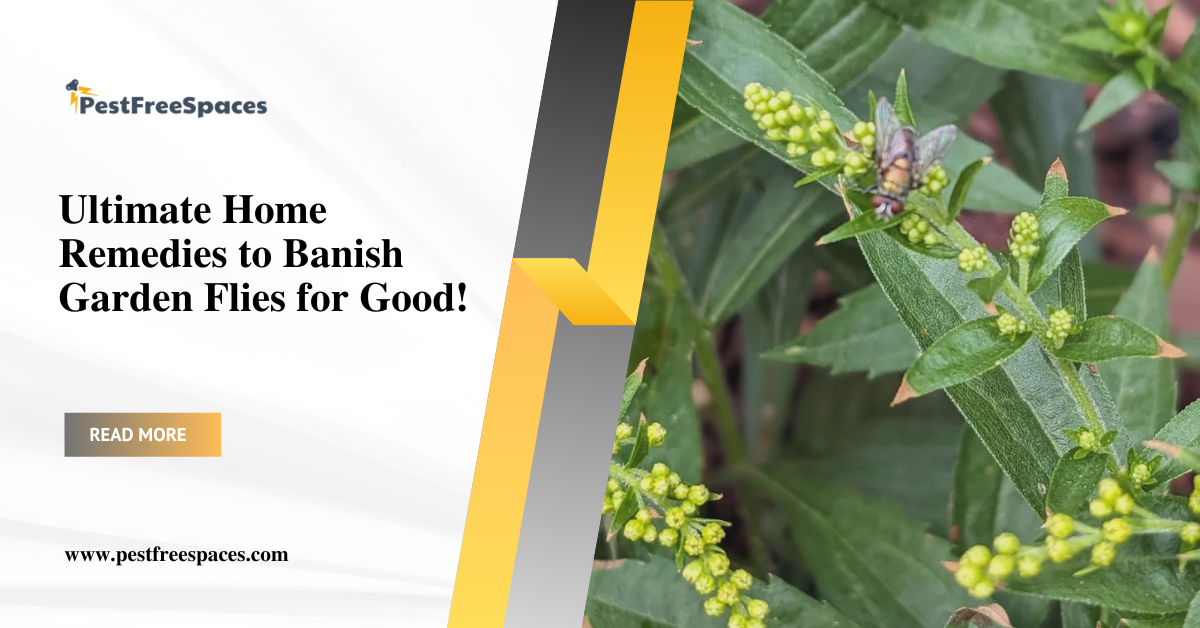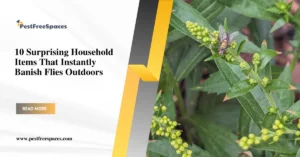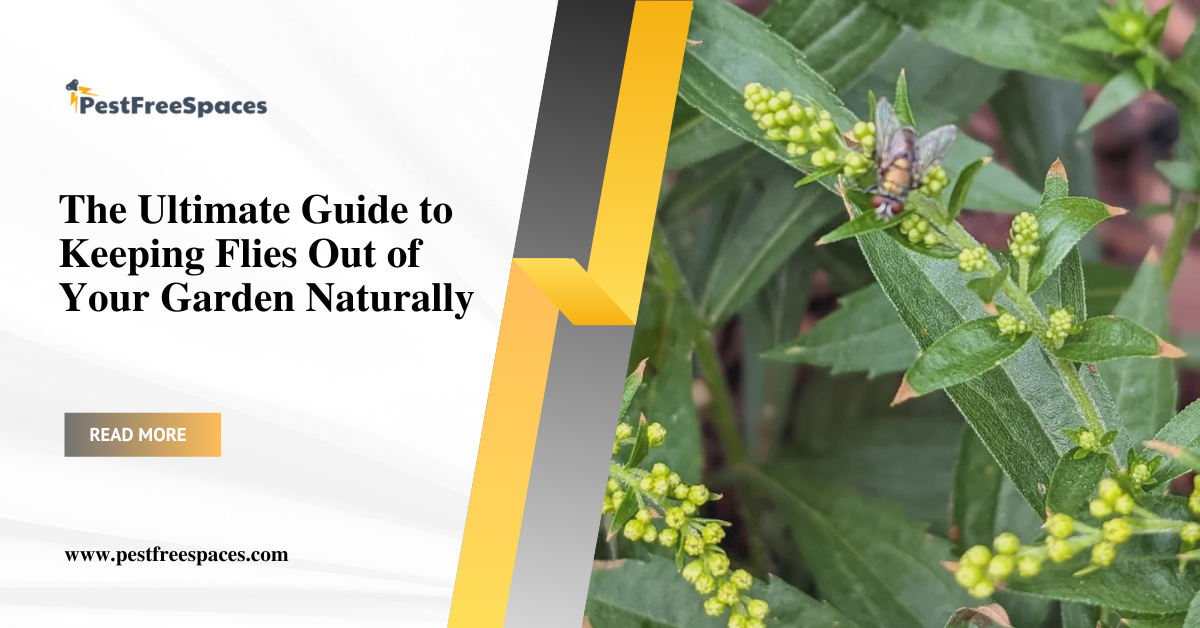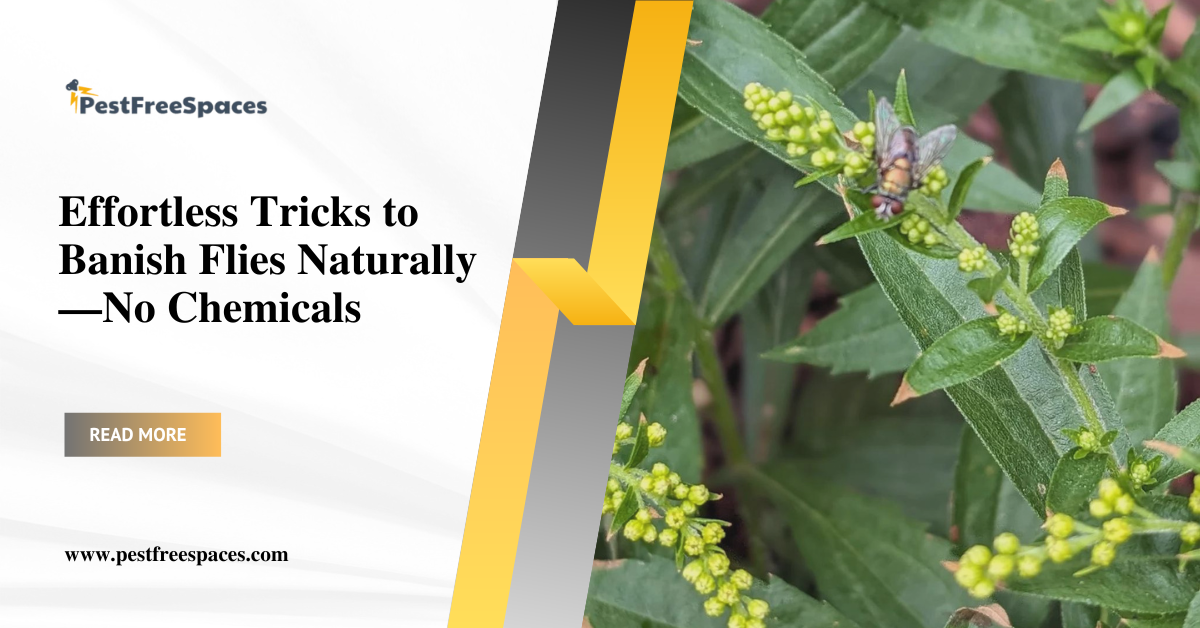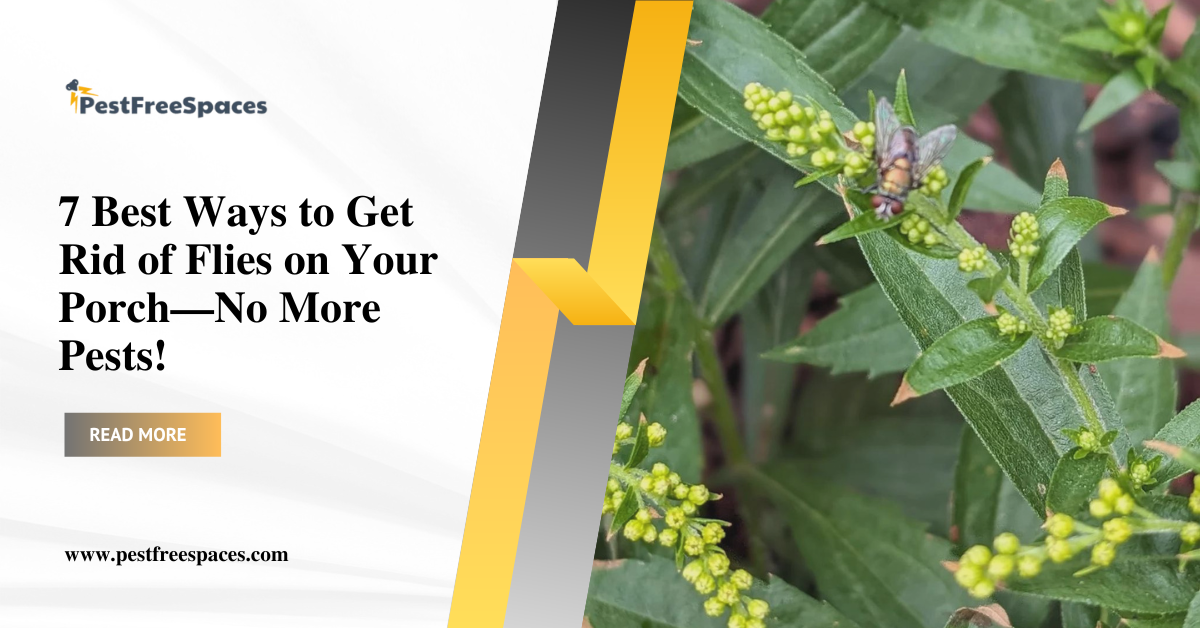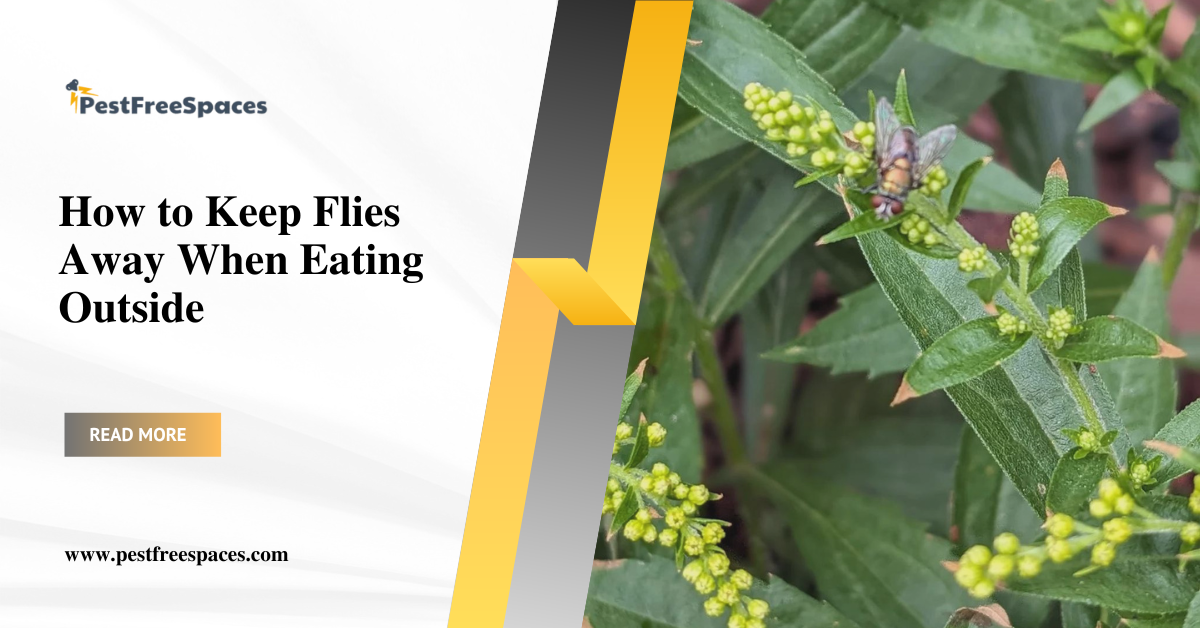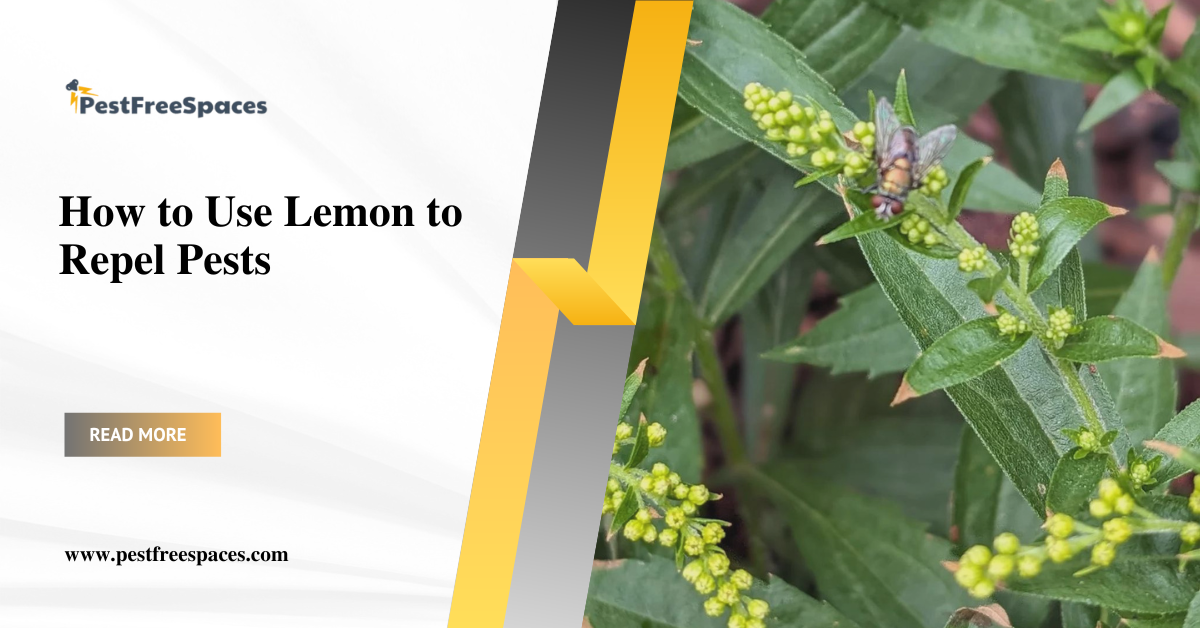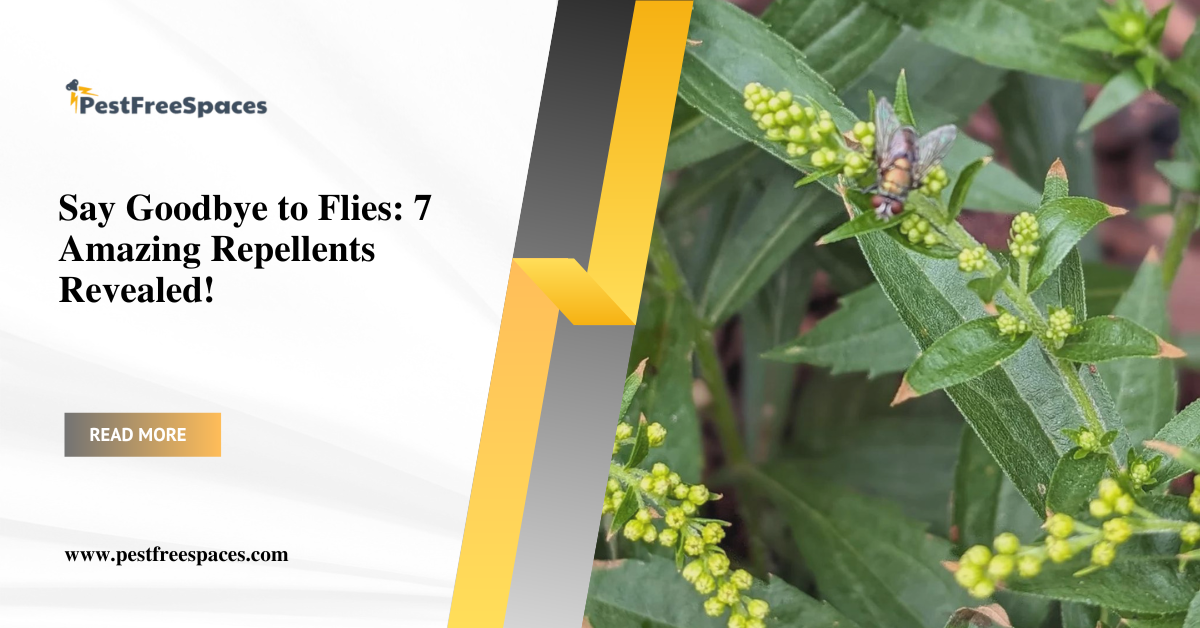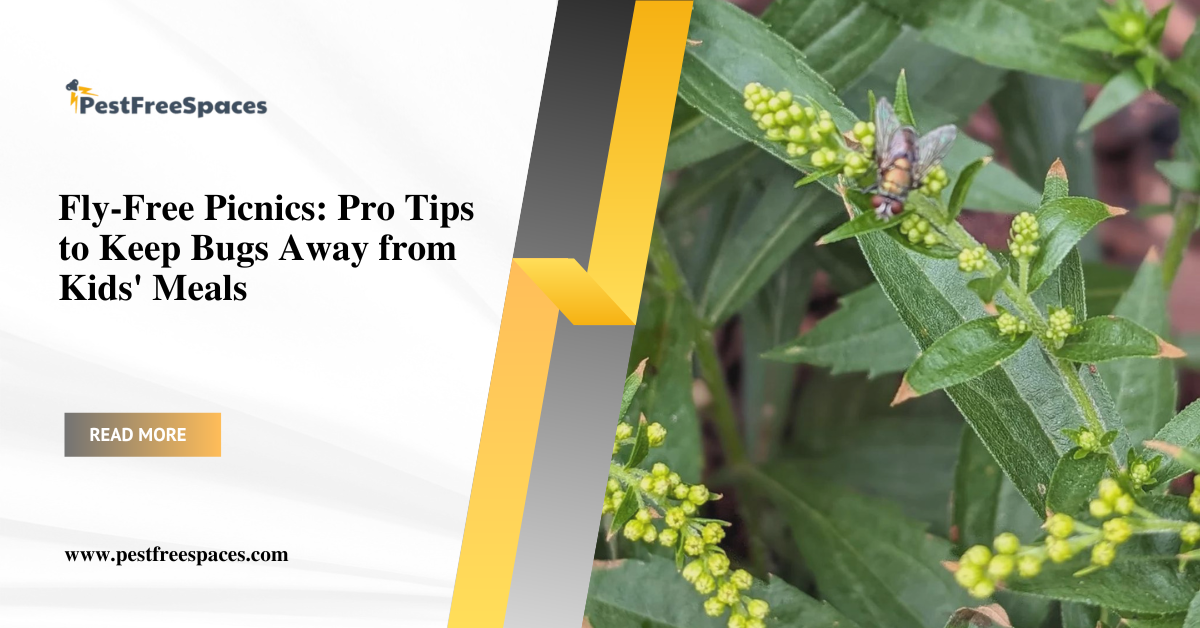To keep flies away from your compost pile, it’s essential to have it built and managed correctly. From my own experience and the Composting Handbook, a balanced compost heap shouldn’t attract flies if the composting process is done right. When you use the right method and layer compost materials like dry leaves and kitchen scraps in equal parts, the pile can quickly break down into rich compost without inviting fly eggs or maggots. Adding more dry or “brown” materials like cardboard helps absorb moisture and reduce odors, making your compost bin less appealing to flies.
The secret also lies in letting good compost creatures—like worms and physical decomposers—do the work. These compost creatures create a compost food web that helps naturally handle the breaking down process, which ultimately benefits the compost quality and reduces the attraction of flies. Whether you’re composting at home or on farms, keeping an eye on moisture levels and turning the pile regularly should reduce fly problems and make for a healthier composting process.
How to Manage Flies in Your Compost Bin: Effective Tips and Solutions

What Kind of Flies Are Found in Compost?
In a compost bin, different types of flies are commonly found as part of the natural breakdown process. With over 120,000 fly species in existence, only a few actually thrive in compost, often drawn to the food scraps and moist environment. However, by managing moisture levels and keeping the compost balanced, it’s possible to limit their presence in this section of your garden.
Vinegar Flies (Drosophila)

Vinegar flies (also known as Drosophila) are tiny small flies often seen in compost heaps in great numbers. These fruit flies are attracted to fermentation and rotten fruit as well as the microorganisms that thrive in a compost heap.
Blow Flies (Calliphoridae)

Blow flies (from the Calliphoridae family), sometimes called carrion flies, are drawn to decaying flesh and meat in a compost pile. Recognizable by their metallic-looking sheen, they vary in size, color, and characteristics and can also be found near manure as they thrive on materials rich in decay.
House Flies (Musca Domestica)

House flies (also known as Musca Domestica) are often found around compost piles due to the organic material that attracts them. With their distinctive gray or black color and four dark stripes on their thorax, they are easy to spot. These flies can carry pathogens and diseases, which is why managing them around compost is essential for health and hygiene.
Soldier Flies (Hermetia Illucens)

Soldier flies (also called Hermetia illucens) are often found in composting environments, where they play a helpful role by consuming decomposing materials. These voracious eaters thrive on high-nitrogen material, breaking it down quickly and reducing waste. Soldier flies produce a strong-smelling leachate that can repel house flies, making them an unexpected ally in managing fly populations. Because they are harmless to humans and animals, soldier flies can be left in the compost to help process food scraps effectively.

Reasons for Compost Fly Infestation
One of the main reasons for a fly infestation in a compost heap is when the conditions become too inviting for flies to thrive. If the compost isn’t active and the material isn’t being rapidly broken down, it creates an inhospitable environment for the right decomposition but an ideal one for fly consumption. This causes a buildup of flies, leading to a major fly infestation. When the composting process stalls, it becomes just as unsuitable as an inactive compost pile, allowing flies to settle in and multiply rapidly.
Not Enough Air
When compost lacks enough air, the material breaks down slowly, creating cool and moist conditions that are perfect for attracting flies. In these great conditions, the composting process can stall, which allows the organic matter to become a breeding ground for flies. This lack of oxygen means the compost doesn’t decompose as it should, leading to an increase in pests that thrive in such stagnant environments. Regularly turning the compost can help ensure that it stays aerated and reduces the chances of a fly problem.
Too Much Moisture
Having too much moisture in your compost can create problems by forcing air out of the tiny pores within the material, leading to anaerobic composting. This situation means that the compost is breaking down without oxygen, which results in slow decomposition and can produce foul odors. Ideally, the moisture content should be around 45-60%, which allows the right balance of water and air for healthy composting. If your compost feels overly wet, adding dry materials like leaves or straw can help absorb some of the excess water, improving the composting process.
Imbalance of Materials
An imbalance of materials in your compost can cause serious problems. When the mixture is too high in carbon (the brown materials) and not enough nitrogen (the green materials), like grass clippings, it can lead to a matted, wet compost heap. This condition makes it hard for air to circulate, forcing oxygen out and slowing down the composting process. A good balance between dry browns and green materials is essential for an active compost heap. To achieve this balance, aim to have enough water content without making it soggy, so the compost can break down properly.
Food on the outside of the Compost
Leaving food on the outside of the compost pile can easily attract unwanted flies. Organic materials like fish, meat, dairy, and even fruit and vegetable waste can draw in pests, including vinegar flies, which love to feast on these items. To keep your compost healthy and reduce the chance of a fly infestation, it’s best to bury any food scraps deep inside the compost. This way, they will break down properly without drawing attention from flies and other animals that could disrupt the composting process.
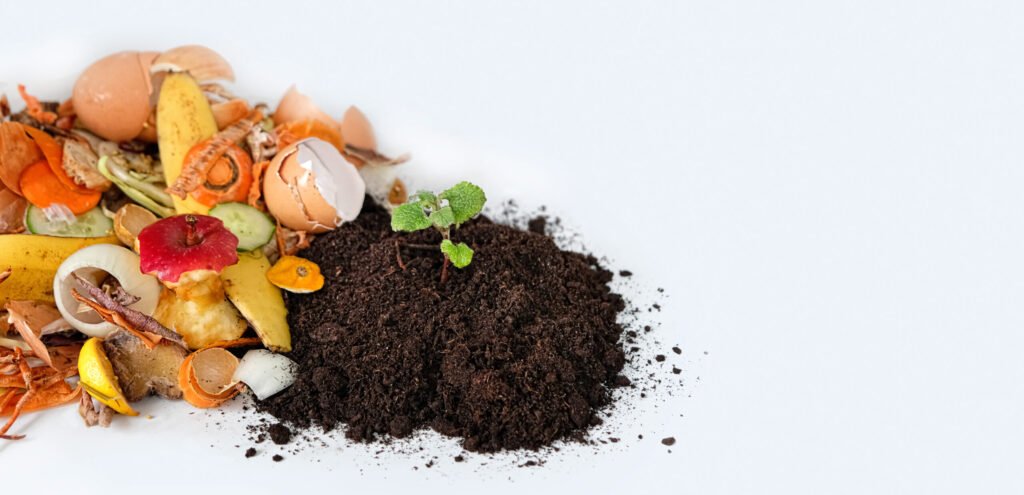
How to Prevent Fly Infestation in Your Compost Pile
To achieve a fly infestation free compost pile, you must follow specific steps that overlap in their effectiveness. One crucial aspect is maintaining the right moisture content. Aim for a balance that feels like a squeezing wrung-out sponge. This ensures that the moisture levels are optimal, around 45-60%, preventing the anaerobic conditions that attract flies. If your compost feels too wet, consider adding absorbent materials like shredded paper or sawdust. Using a moisture meter can help you monitor these levels. Regular turning of the compost also helps aerate it, which is essential for keeping thermophilic bacteria active and supporting the breakdown of organic material.
Balance Carbon and Nitrogen
Another key factor in preventing fly infestation is maintaining the right balance of carbon and nitrogen materials in your compost. Use a mixture of high carbon brown materials like dry browns (straw, sticks) and high nitrogen green materials such as grass, urine, and chicken manure. A proper mix is essential for creating an active compost heap. If the compost becomes too matted or wet, it can lead to slow decomposition, making it a great environment for flies. Therefore, it’s important to exclude excess moisture by monitoring the moisture levels closely.
Bury Organic Waste Deeply
When adding organic materials, such as fruit, vegetable waste, fish, meat, and dairy, be sure to bury them deep inside the compost pile. This helps to keep smells from escaping, which would otherwise attract flies. Using a spade to mix these materials well into the compost will ensure they are covered by layers of dry browns. Additionally, creating a biofiltration layer with woodchips or straw can help capture odors and deter flies. Consider using a commercial kitchen bin with an air-tight lid to minimize exposure to flies.
Regular Monitoring and Maintenance
Regular monitoring is crucial to keeping your compost pile fly-free. Ensure adequate ventilation in your wooden compost bin by allowing for airflow but preventing flies from getting in. Using fly-proof mesh can also help keep pests out while allowing air to circulate. If you notice an increase in fly activity, aerate the compost with tools like a compost aerator or an iron bar to keep it well-oxygenated. Additionally, consider using a Bokashi Bin or Green Cone for kitchen scraps, which digests food waste effectively without attracting flies. By staying vigilant and implementing these strategies, you can create a thriving compost pile that supports healthy decomposition while keeping insects at bay.
Why Are There Flies in My Compost Bin?
If you notice flies in your compost bin, it’s likely because they are attracted to the decomposing organic material inside. These common pests thrive on food scraps, making your compost a perfect source for them. Flies, such as fruit flies and house flies, see the compost as a great breeding ground, especially if it contains wet or rotting food. To reduce their presence, make sure to turn your compost regularly and cover food scraps with dry material, which helps discourage these pests from settling in. With a little attention, you can keep flies at bay and maintain a healthy compost bin.
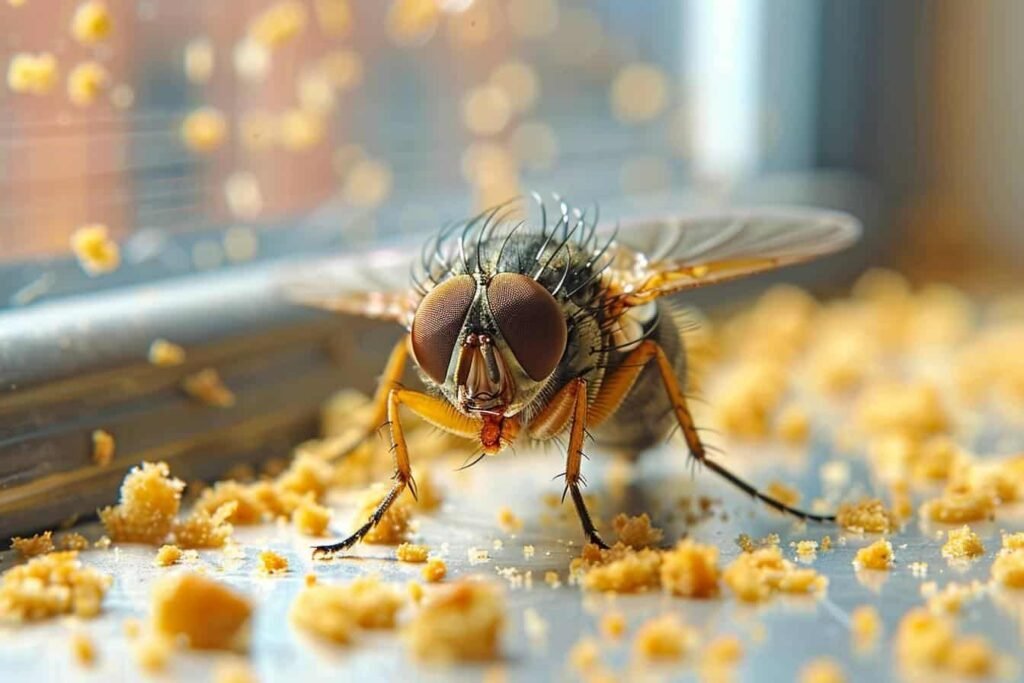
Common Causes of Fly Infestations
Fly infestations in your compost pile can happen for several reasons. One major cause is an improper balance of green and brown materials. Composting relies on a mix of nitrogen-rich (green) and carbon-rich (brown) materials, and if you have too many green items like fruit and vegetable scraps, it can create ideal conditions for flies to thrive. Exposed food scraps can attract flies, making your compost an inviting breeding ground. Additionally, having excess moisture can lead to a too wet environment, which is perfect for these pests. By managing your compost carefully, you can prevent flies from becoming a problem.
Tips to Minimise Flies in Your Compost Bin
To keep flies away from your compost bin, it’s essential to maintain the proper balance of materials. Aim for a mix with a ratio of about 2:1 of brown to green materials. Use brown materials like leaves, straw, and cardboard to help absorb excess moisture and create a less favorable environment for flies. Here are some key tips to follow:
- Bury kitchen scraps under a layer of brown materials to mask odors and deter flies from laying eggs in your compost.
- Aerate your compost regularly by turning it to improve airflow and maintain appropriate moisture levels.
- Keep the compost moist, resembling a wrung-out sponge—not too wet, as excess moisture can attract flies.
- Use a lid to cover your compost bin, limiting flies’ access and helping keep it dry.
- Avoid adding meat, dairy products, and oily foods, as these can attract flies; stick to plant-based kitchen waste.
- Consider using fly traps to catch and reduce their population, opting for either homemade solutions or commercial options.
By following these tips, you can enjoy composting without the hassle of pesky flies.

Natural Fly Deterrents
Flies can quickly become a nuisance around compost piles, attracted to the decaying organic matter. To deter these pesky insects and maintain a clean, odor-free compost area, various natural and effective methods can be employed. These methods involve the use of essential oils, vinegar traps, and diatomaceous earth, all of which offer eco-friendly solutions to keep flies at bay. By understanding these techniques, you can effectively protect your compost pile and enjoy the benefits of composting without the annoyance of flies.
Essential Oils:
- Certain oils like eucalyptus, lavender, and peppermint can effectively repel flies.
- Mix a few drops of essential oil with water in a spray bottle and mist it around your compost bin.
Vinegar Traps:
- Create simple traps using apple cider vinegar.
- Fill a container with vinegar and add a drop of dish soap. The vinegar will attract flies, while the soap will trap them.
Diatomaceous Earth:
- Sprinkle this natural, non-toxic powder around your compost area.
- It works by dehydrating and killing insects that come into contact with it, helping to deter flies.
How to control compost flies when you have an infestation
To control a fly infestation in your compost pile, start by rescuing your compost heap from problems like excess moisture. If your compost is too wet, turn and mix it well to aerate and introduce absorbent brown materials like shredded paper or sawdust. This will help balance the high nitrogen from fresh grass or manure. If the compost is matted or compacted, consider adding bulking agents like straw to improve airflow and heating. To prevent future infestations, you might also think about increasing the size of your bin or using an insulated option that keeps the compost at the right temperature.
As the compost becomes active and materials rapidly break down, the fly infestation should end!
As the compost becomes active and materials start to rapidly break down, the fly infestation should come to an end. When you maintain a healthy balance in your compost bin, it creates a moist environment that attracts beneficial predators like ground beetles and rove earwigs. These predatory insects help control the fly population by feeding on the larvae. To enhance this process, make sure to leave the lid slightly open to allow these helpful creatures easy access to the decaying organic matter inside your bin. This way, you not only tackle the fly problem but also support a thriving composting ecosystem.
Use Biological Controls
Using biological controls is a smart way to manage flies in your compost bin. You can try introducing parasitic wasps, which lay their eggs inside fly pupae. Once the larvae hatch, they will consume the flies and help reduce their number. Another effective option is to add nematodes, which are microscopic worms that feed on fly larvae in the soil. These natural predators work to stop flies from coming back and prevent them from becoming a bigger problem in your compost. By keeping the compost bin open and allowing these beneficial organisms to thrive, you create a balanced ecosystem that naturally controls the fly population.
Effective Biological Controls to Stop Flies in Compost Piles

Trapping Flies
When dealing with flies in your compost pile, trapping can be an effective method. However, while traps can help kill flies, they won’t completely stop more from coming. It’s important to understand that trapping should be a last resort. There are various options available, such as fly traps that use attractants like pheromones or food-based lures to draw flies into a jar or container. Once inside, they become trapped and are unable to escape, which can help reduce the fly problem.
Home-Made Traps
You can also create home-made traps using simple ingredients found around your house. For example, a vinegar trap involves pouring a small amount of apple cider vinegar into a jar or bowl and adding a drop of dish soap. The soap breaks the surface tension, causing the flies to sink and drown. Another easy method is using sticky tape or strips of flypaper, which can catch flying insects effectively. Simply cut strips of adhesive tape and place them around your compost bin to catch pesky flies as they come near.
Avoiding Insecticides
While these methods can help manage the fly situation, it’s best to avoid using insecticides. These chemical solutions often address the symptoms rather than the cause of the fly problem. Insecticides can also harm the beneficial microorganisms in your compost heap that help with decomposition. Additionally, they can be attracted to the compost pile from the outside, causing more issues than they solve. Instead of resorting to poison, focus on natural methods that support healthy composting.
The Backbone of Modern Decision Making
Home Remedies for Garden Flies
Beyond compost management, using home remedies for garden flies can also help reduce fly populations around your compost and garden. For instance, vinegar traps work well as natural deterrents, and spreading diatomaceous earth around garden areas can keep flies from setting up around decaying organic matter. These remedies not only discourage flies from laying eggs but also prevent new infestations without the need for chemicals.
Natural Fly Killer Options
If you’re looking for a natural fly killer, homemade solutions like essential oil sprays and sticky traps are excellent for keeping fly numbers down in your compost area. These natural methods eliminate flies effectively without disrupting the compost’s natural breakdown process. When using traps, aim to place them close to the compost bin for maximum impact.
Plants to Keep Flies Away Outside
You can also add plants to keep flies away outside, such as marigolds, basil, and lavender, near your compost bin or throughout your garden. These plants emit scents that flies dislike, creating a natural barrier that can significantly reduce their presence. This is an eco-friendly approach to fly control and complements a well-maintained compost.
How to Keep Flies Away from Garden and Porch
Learning how to keep flies away from garden spaces and other outdoor areas can help create a fly-free environment around your compost bin. Covering your compost with leaves or mulch, regularly turning it, and using compost covers are effective methods. For how to keep flies off porch and patio areas, you can set up vinegar traps or plant fly-repelling herbs nearby to deter flies from gathering.
Essential Oils for Keeping Flies Away
Using essential oils for keeping flies away is another simple yet effective natural remedy. Oils like peppermint, eucalyptus, and citronella can be diluted in water and sprayed around compost and garden areas to keep flies from lingering. These scents act as natural repellents, providing an effective barrier that also smells pleasant.
Wrapping Up
In summary, to effectively stop flies in your compost, you can use trapping methods, create home-made traps, and avoid chemical insecticides. These strategies not only help control the fly population but also ensure a healthy composting environment. Maintaining a balanced compost heap can prevent future fly infestations and support the work of natural decomposers, keeping your compost pile productive and healthy.
Managing flies in your compost bin is essential for keeping it a healthy and productive space. Maintaining a proper balance of materials is key, so following effective techniques can greatly help. Remember, a well-maintained compost bin not only reduces the nuisance of flies but also turns your household waste into rich organic material for your garden. By focusing on these tips, you can create an environment that minimizes fly issues and maximizes the benefits of composting.
Key Points
- Proper Management: A well-managed compost pile should not attract flies. Proper layering of materials, like combining dry leaves with kitchen scraps, is essential for effective composting.
- Use of Brown Materials: Adding more dry or “brown” materials, such as cardboard, helps absorb moisture and reduce odors, making the compost bin less appealing to flies.
- Natural Decomposers: Encouraging beneficial compost organisms like worms and decomposers can help break down materials effectively, improving compost quality and deterring flies.
- Fly Species: Common flies in compost include vinegar flies, blow flies, house flies, and soldier flies. Each species has specific attraction points, mainly related to food scraps and moisture levels.
- Preventing Infestations: Maintaining a balance of carbon and nitrogen, controlling moisture levels, burying organic waste, and regular monitoring are key strategies to prevent fly infestations.
- Biological Controls: Introducing parasitic wasps and nematodes can help manage fly populations naturally by targeting their larvae and pupae.
- Trapping Techniques: Using traps and homemade solutions like vinegar traps can reduce fly numbers but should not replace proper compost management.
- Avoid Insecticides: It’s best to avoid chemical insecticides as they can harm beneficial organisms in the compost and may worsen fly problems.
People Also Asked
What causes flies to be attracted to my compost bin?
Flies are attracted to the decomposing organic material, particularly if there are wet or rotting food scraps present.
How can I prevent flies in my compost?
To prevent flies, maintain a balanced mix of brown and green materials, keep moisture levels optimal, bury food scraps deep within the compost, and aerate regularly.
What types of flies are commonly found in compost?
Common types of flies in compost include vinegar flies, blow flies, house flies, and soldier flies, each drawn to different aspects of the compost.
Are there natural methods to manage flies in my compost?
Yes, using biological controls like parasitic wasps and nematodes, as well as homemade traps with vinegar, can help manage fly populations naturally.
Should I use insecticides to control flies in my compost?
It’s best to avoid insecticides, as they can harm beneficial microorganisms in the compost and may not effectively address the underlying issues attracting flies.
